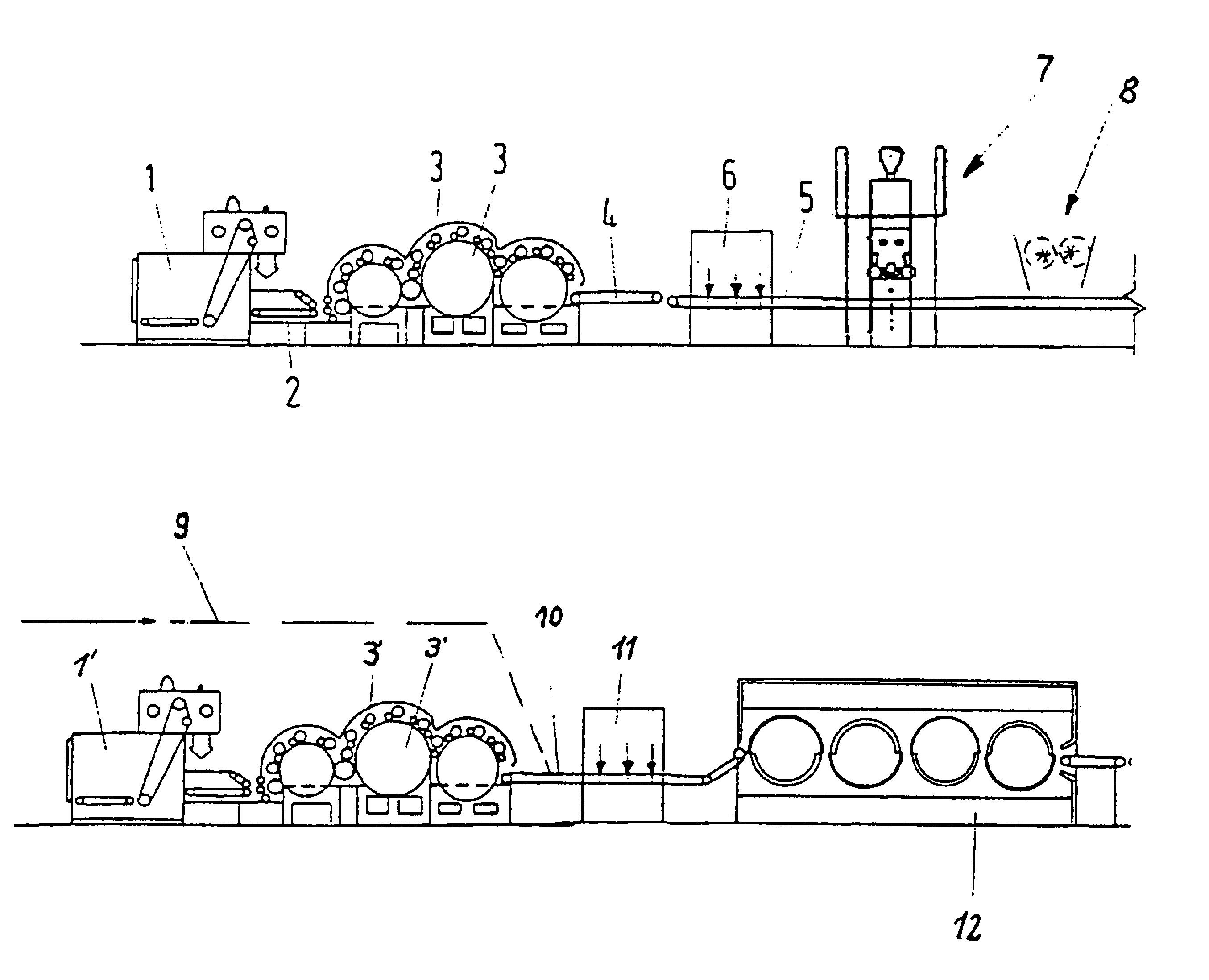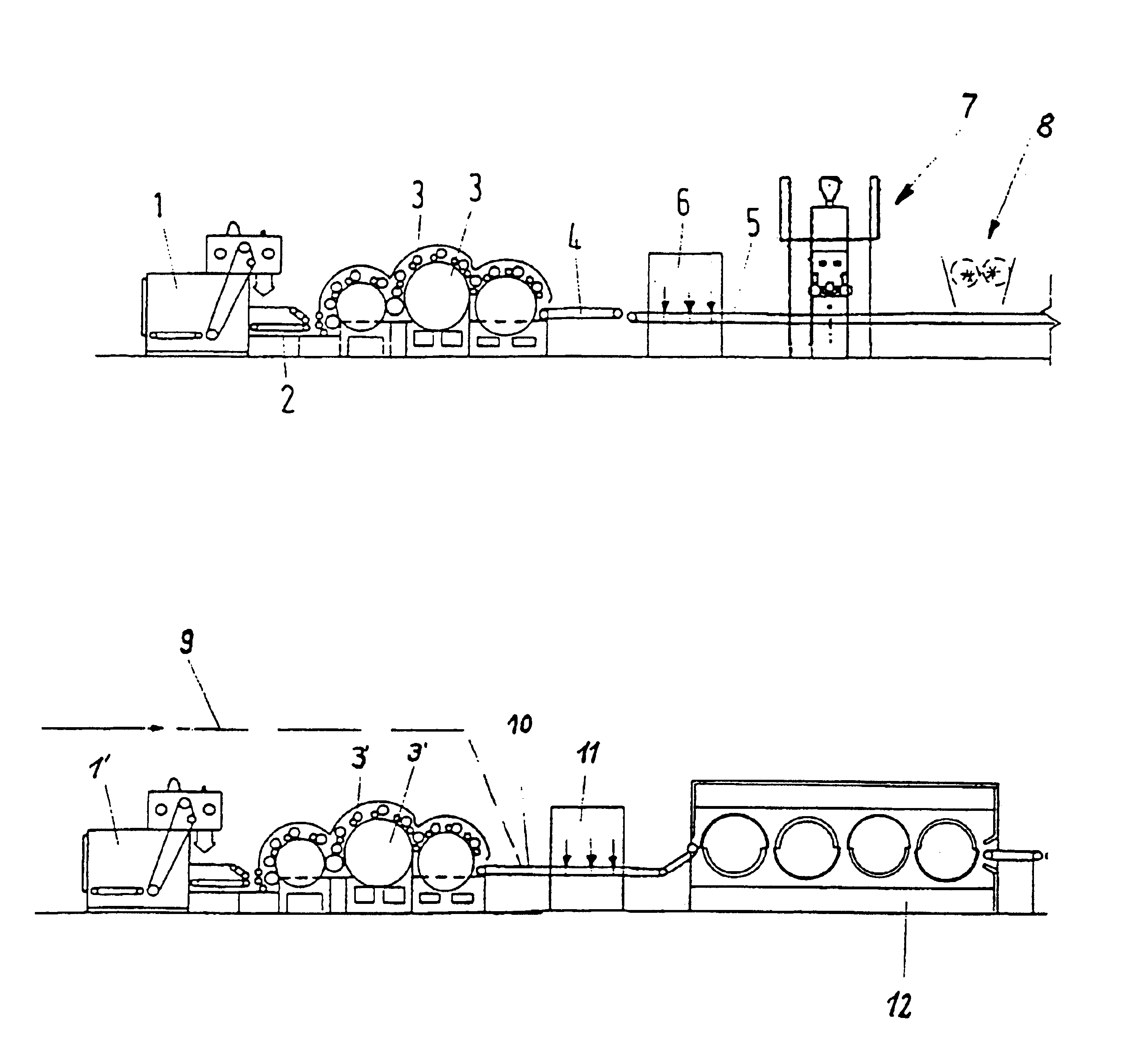Method and device for producing a composite nonwoven for receiving and storing liquids
a composite nonwoven and liquid storage technology, applied in pattern making, needling machines, textiles and papermaking, etc., can solve the problem of product loss and other problems, and achieve the effect of reducing production costs and reducing labor intensity
- Summary
- Abstract
- Description
- Claims
- Application Information
AI Technical Summary
Benefits of technology
Problems solved by technology
Method used
Image
Examples
Embodiment Construction
A nonwoven formed from polyester and / or polypropylene fibres can be considered as the carrier nonwoven. This nonwoven must be first hydraulically needled, i.e. consolidated. Then, to the thus stable carrier nonwoven, a thin layer of a microscopically fine fibre, which is less than 1-5 μm thick, is sprayed onto the nonwoven in an even distribution. The cooling, ultra-fine fibres in a layer weighinq between 1 and 4 g / m2, preferably 2 g / m2 combine to form a type of film yet do not present any such absolutely dense layer. On this barrier layer are then deposited the pulp fibres e.g. by means of the known air-lay method. This super-absorbent pulp layer is then connected by means of water needling to the carrier nonwoven which is covered by the intermediate microfibre layer, during which process the fine pulp fibres can be no longer or only slightly washed through the carrier unit and thus are retained for the useful effect of the product.
A device for accomplishing the method of the inven...
PUM
| Property | Measurement | Unit |
|---|---|---|
| thick | aaaaa | aaaaa |
| permeability | aaaaa | aaaaa |
| water pressure | aaaaa | aaaaa |
Abstract
Description
Claims
Application Information
 Login to View More
Login to View More - R&D
- Intellectual Property
- Life Sciences
- Materials
- Tech Scout
- Unparalleled Data Quality
- Higher Quality Content
- 60% Fewer Hallucinations
Browse by: Latest US Patents, China's latest patents, Technical Efficacy Thesaurus, Application Domain, Technology Topic, Popular Technical Reports.
© 2025 PatSnap. All rights reserved.Legal|Privacy policy|Modern Slavery Act Transparency Statement|Sitemap|About US| Contact US: help@patsnap.com


